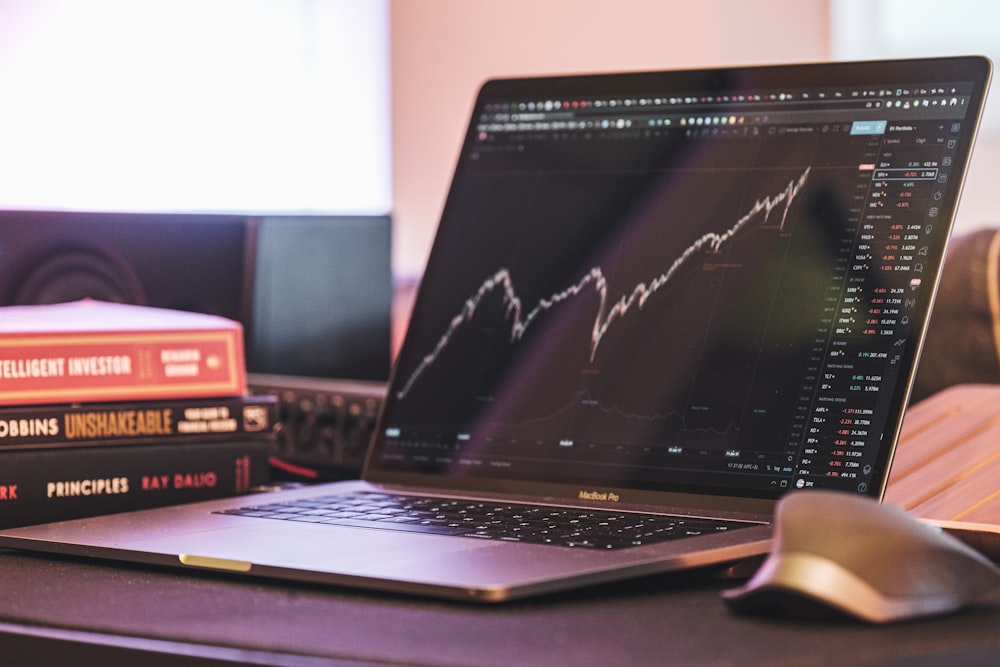Low-Volatility ETFs To Bet Amid Market Volatility
Photo by Yiorgos Ntrahas on Unsplash
Wall Street has lost momentum since the start of August, triggered by the U.S. credit rating downgrade and multiple bank downgrades. The Fed’s hawkish signal, a slowing U.S. jobs market and weak data from China added to the woes.
Against such a backdrop, investors seeking to remain invested in the equity world could consider low-volatility ETFs. These funds — iShares MSCI USA Min Vol Factor ETF, Invesco S&P 500 Low Volatility ETF, Invesco S&P 500 High Dividend Low Volatility ETF, Invesco S&P MidCap Low Volatility ETF and Invesco S&P SmallCap Low Volatility ETF — could be solid options for investors in the current choppy market.
Low-volatility ETFs have the potential to outpace the broader market in bearish conditions or in an uncertain environment, providing significant protection to the portfolio. This is because these funds include more stable stocks that have experienced the least price movement in their portfolio. Further, these allocate more to defensive sectors that usually have a higher distribution yield than the broader markets.
Macro Trends
Fitch Ratings downgraded the U.S. credit rating to AA+ from AAA, citing “expected fiscal deterioration over the next three years,” an erosion of governance and a growing general debt burden. This has led to a strong sell-off in the stocks and a surge in yields. Meanwhile, ratings agency Moody's downgraded the credit ratings of several small to mid-sized U.S. banks and warned that it may downgrade some of the nation's biggest lenders too, citing a looming mild recession, higher interest rates and increased funding costs.
The Fed, in its latest meeting, raised interest rates by a quarter-percentage point to 5.25-5.50%, the highest level since March 2001, marking the 11th rate increase. The central bank also signaled the possibility of further increases ahead.
The latest data revealed that the red-hot U.S. job market is cooling down. The economy added lower-than-expected 187,000 jobs in July, pointing to a slowing economy after a series of interest rate hikes by the Federal Reserve. Together, June and July represented the two weakest monthly gains in two and a half years. Meanwhile, China’s trade data for July showed a worse-than-expected drop in imports and exports, pointing to falling demand overseas and in the country.
ETFs to Consider
iShares MSCI USA Min Vol Factor ETF (USMV)
iShares MSCI USA Min Vol Factor ETF offers exposure to the stocks that have historically declined less than the market during downturns by tracking the MSCI USA Minimum Volatility Index. It holds 171 stocks in its basket, with none accounting for more than 1.7% of the assets. Information technology takes the top spot at 22.9%, while healthcare, financials, and consumer staples round off the next three spots.
With AUM of $28.5 billion, iShares MSCI USA Min Vol Factor ETF charges 15 bps in annual fees and trades in a solid average daily volume of 2 million shares. USMV has a Zacks ETF Rank #3 (Hold) with a Medium risk outlook.
Invesco S&P 500 Low Volatility ETF (SPLV)
Invesco S&P 500 Low Volatility ETF provides exposure to stocks with the lowest realized volatility over the past 12 months. It tracks the S&P 500 Low Volatility Index and holds 101 securities in its basket. Invesco S&P 500 Low Volatility ETF is widely spread across sectors, with consumer staples, healthcare, utilities, and financials receiving double-digit exposure each.
Invesco S&P 500 Low Volatility ETF has amassed $9 billion in its asset base and trades in a solid volume of around 2 million shares a day on average. It charges 25 bps in annual fees and has a Zacks ETF Rank #3 with a Medium risk outlook.
Invesco S&P 500 High Dividend Low Volatility ETF (SPHD)
Invesco S&P 500 High Dividend Low Volatility ETF offers exposure to 51 stocks traded on the S&P 500 Index that historically have provided high dividend yields and low volatility. It follows the S&P 500 Low Volatility High Dividend Index. Invesco S&P 500 High Dividend Low Volatility ETF is widely spread across sectors, with utilities, real estate, consumer staples, and healthcare receiving double-digit exposure each.
Invesco S&P 500 High Dividend Low Volatility ETF has amassed $3.2 billion and charges 30 bps in annual fees. The fund trades in an average daily volume of 631,000 shares.
Invesco S&P MidCap Low Volatility ETF (XMLV)
Invesco S&P MidCap Low Volatility ETF offers exposure to the mid-cap securities from the S&P MidCap 400 Index with the lowest-realized volatility over the past 12 months. It follows the S&P MidCap 400 Low Volatility Index and holds 81 securities in its basket. Invesco S&P MidCap Low Volatility ETF is widely spread across sectors, with industrials, financials, utilities and real estate receiving double-digit exposure each.
Invesco S&P MidCap Low Volatility ETF has AUM of $938.3 million and charges 25 bps in annual fees. XMLV trades in an average daily volume of about 50,000 shares.
Invesco S&P SmallCap Low Volatility ETF (XSLV)
Invesco S&P SmallCap Low Volatility ETF offers exposure to small-cap securities from the S&P SmallCap 600 Index with the lowest realized volatility over the past 12 months. It follows the S&P SmallCap 600 Index and holds 120 stocks in its basket. Invesco S&P SmallCap Low Volatility ETF is also widely spread across sectors, with financials, real estate and industrials receiving double-digit exposure each.
Invesco S&P SmallCap Low Volatility ETF has amassed $436.6 million and trades in a volume of 45,000 shares per day on average. The product charges 25 bps in annual fees.
Bottom Line
These products could be worthwhile for low-risk-tolerance investors and have the potential to outperform the broad market, especially if market volatility persists.
More By This Author:
3 Sector ETFs That Beat The Market Last Week
Pharma ETFs in Focus Post Q2 Earnings
A Complete Guide To Dividend Aristocrat ETFs
Disclosure: Zacks.com contains statements and statistics that have been obtained from sources believed to be reliable but are not guaranteed as to accuracy or completeness. References to any ...
more



